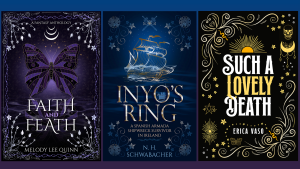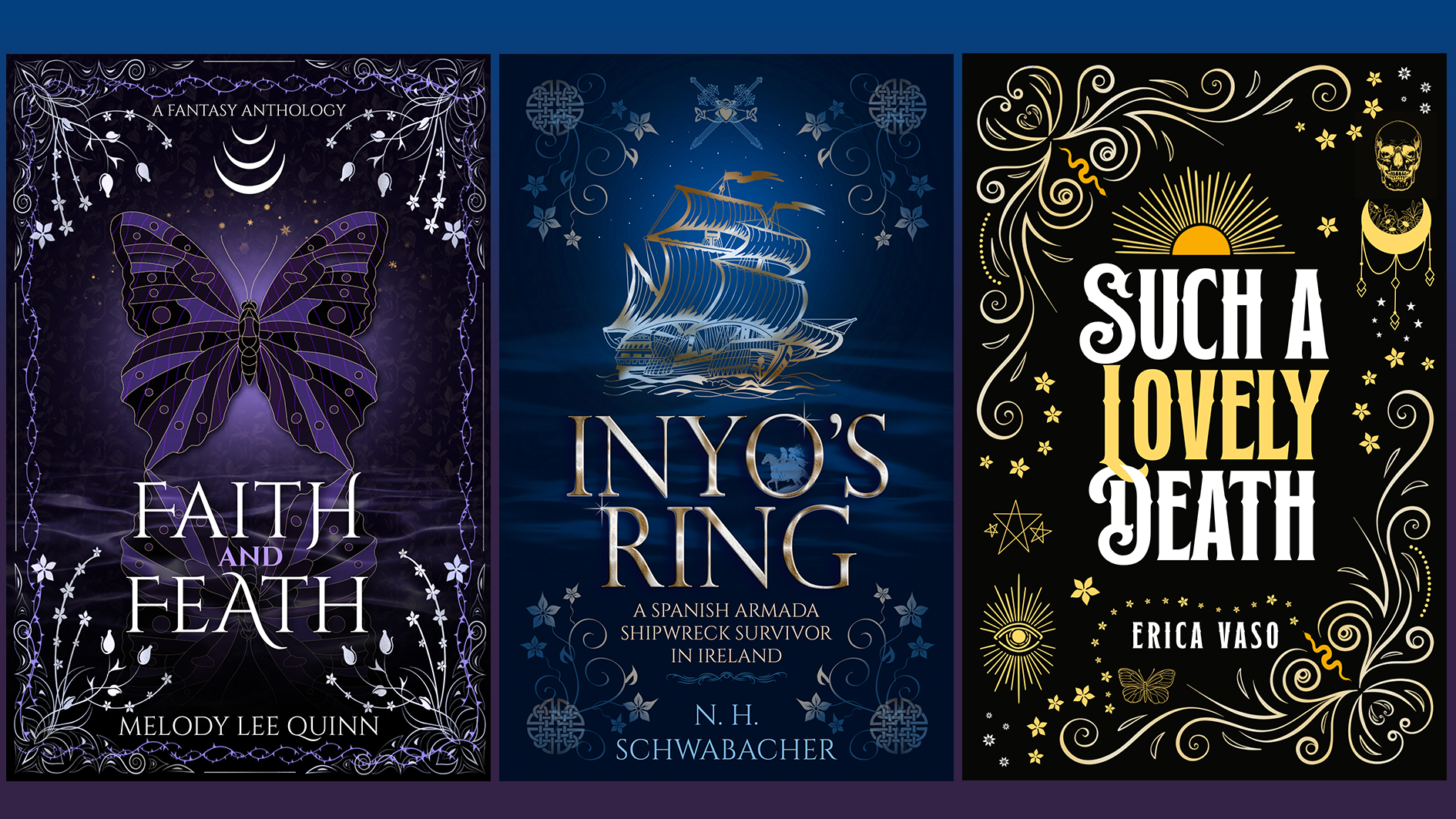Creating a fantasy book cover is like crafting the visual gateway to an entirely new world. It’s the first thing a potential reader will see, and it sets the tone for the adventure within. Here are some tips on designing an effective, and stunning, fantasy book cover.
Step 1: Know the Story’s Heart and Soul
Before you even touch your design tools, dive deep into the world of the book. What’s the mood? Is it dark and gritty, whimsical, or epic? Is it set in a medieval kingdom, a futuristic dystopia, or an enchanted forest? Understanding the story’s essence is key to designing a cover that resonates with the book’s audience. Talk to the author (if you’re not the author yourself!) and gather as much information as possible.
For instance, if you’re designing for a high-fantasy novel set in a magical realm, elements like dragons, swords, castles, or mysterious landscapes might be central. But for an urban fantasy, neon lights, magical symbols, or modern cityscapes might be more appropriate.
Step 2: Research the Genre and Trends
Fantasy is a broad genre, and each subgenre has its own visual language. Go to your favorite bookstore or online platform and browse fantasy covers. Notice how they vary by type. Epic fantasies often feature grand, sweeping landscapes, while fairy tale retellings might showcase a single, striking character or an iconic symbol.
Look for trends. For example, fantasy books often use muted or dark tones with pops of bright colors to highlight magical elements or key characters. Find out what resonates with readers but also think about how you can make the cover stand out from the rest.
 Step 3: Choose Your Imagery Wisely
Step 3: Choose Your Imagery Wisely
Fantasy covers thrive on strong imagery. Your goal is to create a sense of wonder and curiosity. Here are some elements you can play with:
- Characters: Is there a central character that defines the story? Highlighting a protagonist with unique features, like a glowing sword or mystical eyes, can immediately grab attention.
- Symbols: A powerful symbol, like an ancient relic, a magical creature, or a mystical portal, can convey a lot with just one image. Think of the “One Ring” from The Lord of the Rings—iconic symbols stick with readers.
- Landscapes: Fantasy often involves grand, otherworldly settings. Incorporating vast mountain ranges, enchanted forests, or celestial skies can transport the reader to the world inside the book.
The key is balance—don’t overcrowd the cover. Keep it focused on one or two central elements.
Step 4: Think About Typography
Typography in fantasy covers is just as crucial as the imagery. It should complement the genre and story. For fantasy, you might lean toward serif fonts that have a classic, medieval feel or handwritten fonts for a more magical, ancient vibe.
Consider how the title and author’s name are positioned. Do you want the text to be the focal point, or should it subtly frame the central image? Play around with placement and size until you find a harmonious balance.
Pro Tip: Adding slight embellishments like glowing effects, ornate flourishes, or rough textures to the text can further enhance the fantasy feel.
Step 5: Choose Colors That Evoke Emotion
Colors have the power to evoke specific emotions and set the tone for the book. In fantasy, darker tones like deep purples, blacks, and midnight blues are often used to create a sense of mystery and magic. Bright colors, like gold or emerald green, can signify power or otherworldliness.
If it’s a darker, more intense fantasy, muted and earthy tones with splashes of bold colors can help establish that atmosphere. Lighter, more whimsical fantasies might use pastels or vivid, dreamy hues. Let the color palette match the mood and theme of the book.
Step 6: Don’t Forget About the Spine and Back Cover
If you’re designing a physical cover, remember that the spine and back matter just as much as the front. For the spine, think about how it will look stacked on a bookshelf. Bold typography and a recognizable symbol are great for catching the eye. The back cover, while usually reserved for the blurb, can still have some visual elements that hint at the story.
If you’re designing for eBooks, the focus will be on how the cover looks as a thumbnail, so make sure it’s readable and striking even at a small size.
Step 7: Get Feedback
Once you have a design, take a step back and get some fresh eyes on it. Share it with other fantasy readers or authors to see if it resonates with them. They might notice details you missed or offer ideas to make it even more compelling.
Final Thoughts
Designing a fantasy book cover is about capturing the magic of the story and presenting it in a way that sparks curiosity. You want readers to feel like they’re stepping into another world before they even open the book. With careful thought about imagery, color, typography, and composition, you’ll create a cover that not only looks beautiful but also invites readers on an unforgettable journey.
Now grab your magic wand (or, you know, your design software) and start creating something enchanting!

Join me for a deeper dive into fantasy cover design! In this easy, self-paced class, I share my step-by-step process of creating a stunning fantasy cover. No artistic skills necessary.
Along with this class, you’ll receive:
- 25 brushes from my Fantasy Cover Starter Brushset ($29.95 value)
- Oseberg font
- Procreate Fantasy color palette
Tools needed:
- iPad
- Procreate
- Stylus (or Apple Pencil)



Leave A Comment